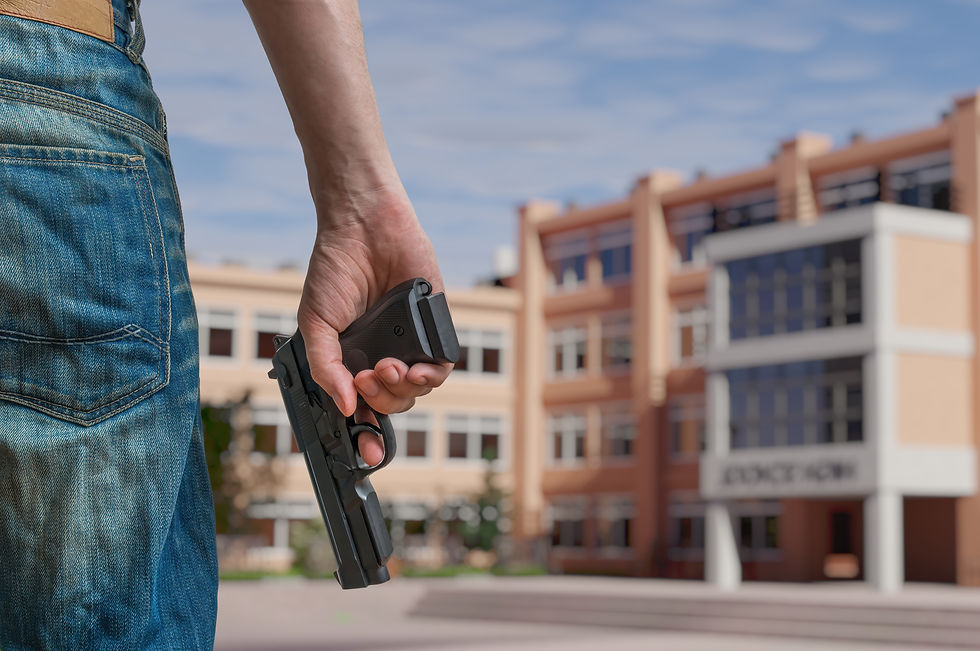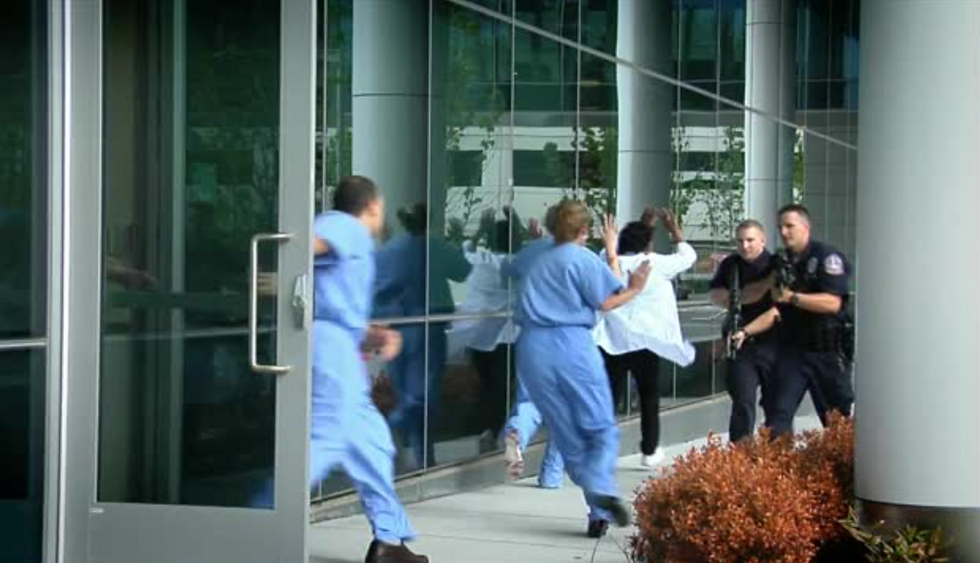The Science of Situational Awareness: How to Train Your Brain to Stay Alert
- gene423
- Sep 15
- 5 min read

The Science of Situational Awareness: How to Train Your Brain to Stay Alert
In today's fast-paced world, it's more important than ever to be aware of our surroundings. Situational awareness is the ability to perceive, process, and comprehend information about our environment, and it's a critical skill for personal safety, decision making, and success in any situation. But how do we train our brains to stay alert?
The science of situational awareness offers a range of techniques and strategies for improving our perception and response to the world around us. From mindfulness and meditation to physical training and mental exercises, there are many ways to enhance our situational awareness and stay one step ahead of potential dangers or opportunities. In this article, we'll explore the science of situational awareness and share some practical tips for training your brain to stay alert. So, whether you're a student, a professional, or just someone who wants to be more aware of your surroundings, read on to learn how to become a situational awareness ninja!
What is situational awareness and why is it important?
Situational awareness is the ability to perceive, process, and comprehend information about our environment. It is the ability to understand what is happening around us, anticipate what might happen next, and make decisions based on that understanding. Situational awareness is important because it allows us to stay safe and make better decisions. For example, if you are driving a car, situational awareness allows you to anticipate potential hazards and avoid accidents. Similarly, in a work environment, situational awareness can help you identify potential problems before they become serious issues.
Situational awareness is not just about being aware of potential dangers; it's also about being aware of opportunities. Being aware of our surroundings can help us identify opportunities that we might otherwise miss. For example, if you are in a networking event, situational awareness allows you to identify potential business opportunities and make connections that could lead to future success.
The science behind situational awareness
Situational awareness is a complex process that involves a combination of sensory perception, cognitive processing, and decision making. The brain uses sensory information from our environment to create a mental model of what is happening around us. This mental model is then used to anticipate what might happen next and make decisions based on that anticipation.
There are several factors that can affect our ability to develop situational awareness. One of the most important factors is attention. Our ability to pay attention to our environment is critical for developing situational awareness. Attention is limited, and we can only focus on a limited amount of information at any given time. Therefore, it's important to be selective about what we pay attention to.
Another important factor that can affect our situational awareness is stress. Stress can impair our ability to pay attention and process information. When we are stressed, our brain focuses on the source of the stress, and we become less aware of our surroundings. Therefore, it's important to learn how to manage stress effectively to improve our situational awareness.
Types of situational awareness
There are three types of situational awareness: perception, comprehension, and projection. Perception is the ability to perceive information about our environment. Comprehension is the ability to understand what is happening around us. Projection is the ability to anticipate what might happen next.
Perception is the first step in developing situational awareness. It involves using our senses to gather information about our environment. This information is then processed by the brain to create a mental model of what is happening around us. Perception is critical for identifying potential hazards and opportunities.
Comprehension is the second step in developing situational awareness. It involves understanding what is happening around us. This requires us to interpret the information that we have gathered through perception. Comprehension is critical for making decisions based on the information that we have gathered.
Projection is the final step in developing situational awareness. It involves anticipating what might happen next based on the information that we have gathered through perception and comprehension. Projection is critical for preparing for potential hazards and opportunities.
How to develop situational awareness
Developing situational awareness requires practice and training. Here are some tips for developing situational awareness:
1. Pay attention to your environment: Start by paying attention to your environment. Look around and observe what is happening around you. Try to identify potential hazards and opportunities.
2. Practice mindfulness: Mindfulness is the practice of being present in the moment. It can help you develop situational awareness by increasing your ability to pay attention to your environment. Try practicing mindfulness for a few minutes each day.
3. Use your senses: Use all of your senses to gather information about your environment. This includes sight, hearing, touch, taste, and smell.
4. Stay focused: Stay focused on your environment and avoid distractions. Distractions can reduce your ability to develop situational awareness.
5. Stay calm: Stay calm in stressful situations. Stress can impair your ability to develop situational awareness.
Training your brain for situational awareness
Training your brain for situational awareness requires practice and repetition. Here are some exercises and drills that can help you develop situational awareness:
1. Memory exercises: Memory exercises can help you improve your ability to recall information about your environment. Try memorizing the details of your surroundings and recalling them later.
2. Observation exercises: Observation exercises can help you improve your ability to perceive information about your environment. Try observing a scene for a few minutes and then recalling as many details as possible.
3. Decision-making exercises: Decision-making exercises can help you improve your ability to make decisions based on the information that you have gathered through perception and comprehension.
4. Physical training: Physical training can help you develop situational awareness by increasing your ability to perceive and respond to your environment. Try practicing martial arts or self-defense.
The benefits of situational awareness in daily life
Developing situational awareness can have many benefits in daily life. Here are some of the benefits:
1. Personal safety: Situational awareness can help you stay safe by identifying potential hazards and avoiding dangerous situations.
2. Better decision making: Situational awareness can help you make better decisions by providing you with more information about your environment.
3. Improved performance: Situational awareness can help you perform better by allowing you to anticipate potential challenges and opportunities.
4. Increased confidence: Situational awareness can increase your confidence by giving you a sense of control over your environment.
Situational awareness in the workplace
Situational awareness is also important in the workplace. Here are some tips for developing situational awareness in the workplace:
1. Pay attention to your surroundings: Be aware of potential hazards and opportunities in the workplace.
2. Communicate effectively: Effective communication can help you gather information about your environment and make better decisions.
3. Be proactive: Be proactive in identifying potential problems and taking action to address them.
4. Stay calm under pressure: Stay calm in stressful situations to maintain your situational awareness.
The importance of situational awareness in today's world
In conclusion, situational awareness is a critical skill for personal safety, decision making, and success in any situation. Developing situational awareness requires practice and training, but the benefits are well worth the effort.
By paying attention to your environment, practicing mindfulness, and using your senses, you can develop situational awareness and become a situational awareness ninja. So, start training your brain today and stay one step ahead of potential dangers or opportunities!







Comments